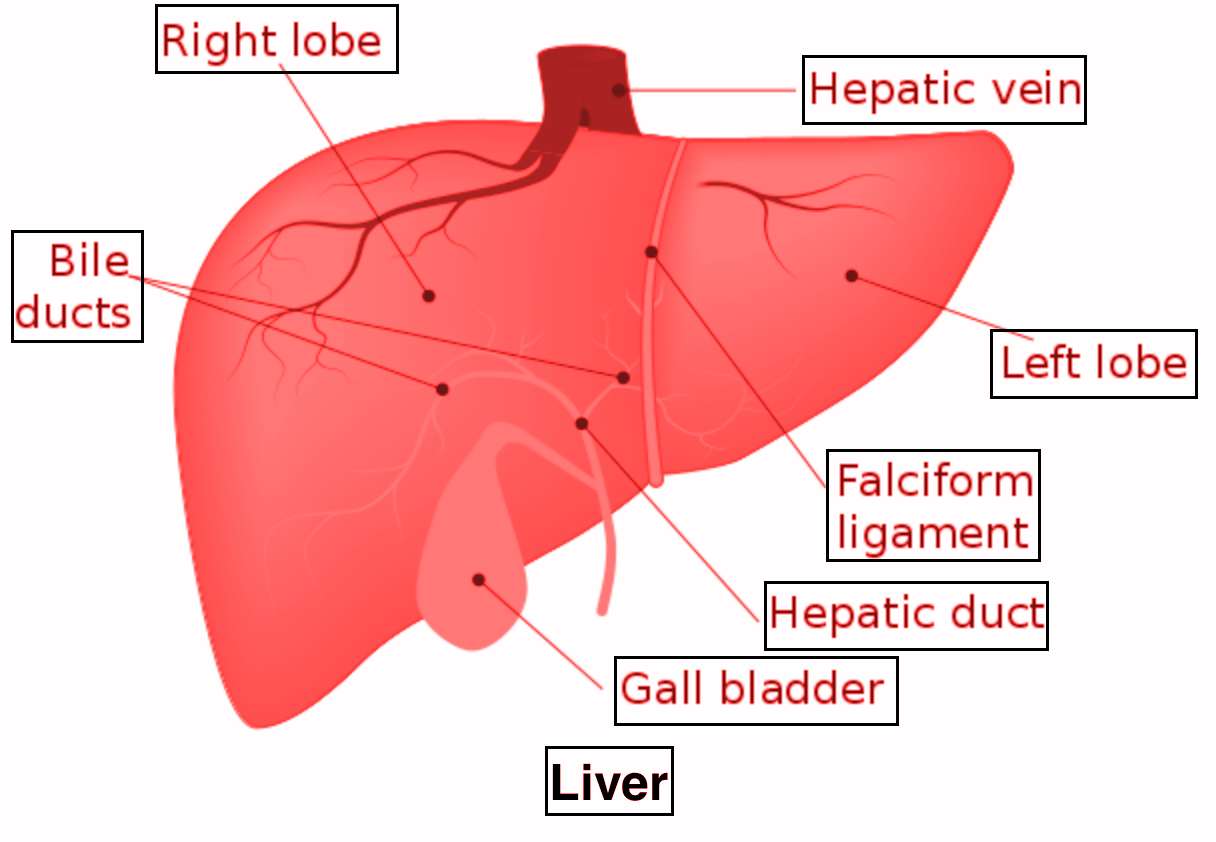
The liver is called the reticular gland because
(a) The shape is reticular
(b) It contains reticular tissue
(c) Lobules branches and anastomose with one another to form a network
(d) Hepatic duct and cystic duct unite to form the bile duct
Answer
470.4k+ views
Hint: The liver is an accessory digestive organ that produces bile, an alkaline fluid containing cholesterol and bile acids, which helps the breakdown of fat. The liver is known to have a network of supporting mesh, which is a type of fiber in connective tissue. These fibers crosslink to form the fine meshwork.
Complete answer:
The Liver is called the reticular gland because it contains reticular tissue. The liver is an organ only found in vertebrates which detoxifies various metabolites, synthesizes proteins, and produces biochemicals necessary for digestion and growth. The liver is a reddish- brown, wedge- shaped organ with two lobes of unequal size and shape. Liver tissue is made up of lots of smaller units of liver cells called lobules.

Many canals carrying blood and bile run between the liver cells. Reticular fiber is a type of fiber in connective tissue. It is composed of type III collagen secreted by reticular cells. Reticular fibers crosslink to form a fine meshwork. This network acts as a supporting mesh in soft tissue such as the liver, bone marrow, and the tissues and organs of the lymphatic system. Hence, the Liver is called the reticular gland because it contains reticular tissue.
Additional Information:
- Lobules are the functional units of the liver. Each lobule is made up of millions of hepatic cells, which are the basic metabolic cells.
- The lobules are held together by a fine, dense, irregular, fibroelastic connective tissue layer extending from the fibrous capsule covering the entire liver known as Glisson’s capsule.
- The whole surface of the liver, except for the bare area, is covered in a serous coat derived from the peritoneum, and this firmly adheres to the inner Glisson’s capsule.
So, the correct answer is ‘(b) It contains reticular tissue’.
Note:
- The liver is both the heaviest internal organ and the largest gland in the human body.
- It is located in the right upper quadrant of the abdominal cavity, it rests just below the diaphragm, to the right of the stomach, and overlies the gallbladder.
- The liver is connected to two large blood vessels: the hepatic artery and the portal vein. The hepatic artery carries oxygen- rich blood, whereas the portal vein carries blood rich in digested nutrients.
Complete answer:
The Liver is called the reticular gland because it contains reticular tissue. The liver is an organ only found in vertebrates which detoxifies various metabolites, synthesizes proteins, and produces biochemicals necessary for digestion and growth. The liver is a reddish- brown, wedge- shaped organ with two lobes of unequal size and shape. Liver tissue is made up of lots of smaller units of liver cells called lobules.

Many canals carrying blood and bile run between the liver cells. Reticular fiber is a type of fiber in connective tissue. It is composed of type III collagen secreted by reticular cells. Reticular fibers crosslink to form a fine meshwork. This network acts as a supporting mesh in soft tissue such as the liver, bone marrow, and the tissues and organs of the lymphatic system. Hence, the Liver is called the reticular gland because it contains reticular tissue.
Additional Information:
- Lobules are the functional units of the liver. Each lobule is made up of millions of hepatic cells, which are the basic metabolic cells.
- The lobules are held together by a fine, dense, irregular, fibroelastic connective tissue layer extending from the fibrous capsule covering the entire liver known as Glisson’s capsule.
- The whole surface of the liver, except for the bare area, is covered in a serous coat derived from the peritoneum, and this firmly adheres to the inner Glisson’s capsule.
So, the correct answer is ‘(b) It contains reticular tissue’.
Note:
- The liver is both the heaviest internal organ and the largest gland in the human body.
- It is located in the right upper quadrant of the abdominal cavity, it rests just below the diaphragm, to the right of the stomach, and overlies the gallbladder.
- The liver is connected to two large blood vessels: the hepatic artery and the portal vein. The hepatic artery carries oxygen- rich blood, whereas the portal vein carries blood rich in digested nutrients.
Recently Updated Pages
Master Class 10 General Knowledge: Engaging Questions & Answers for Success

Questions & Answers - Ask your doubts

Master Class 11 Accountancy: Engaging Questions & Answers for Success

Master Class 10 Computer Science: Engaging Questions & Answers for Success

Master Class 11 Science: Engaging Questions & Answers for Success

Master Class 10 Science: Engaging Questions & Answers for Success

Trending doubts
According to Bernoullis equation the expression which class 11 physics CBSE

Draw a diagram of nephron and explain its structur class 11 biology CBSE

Differentiate between calcination and roasting class 11 chemistry CBSE

A solution of a substance X is used for white washing class 11 chemistry CBSE

What is spore formation class 11 biology CBSE

Nastic movement differ from tropical movement in being class 11 biology CBSE




